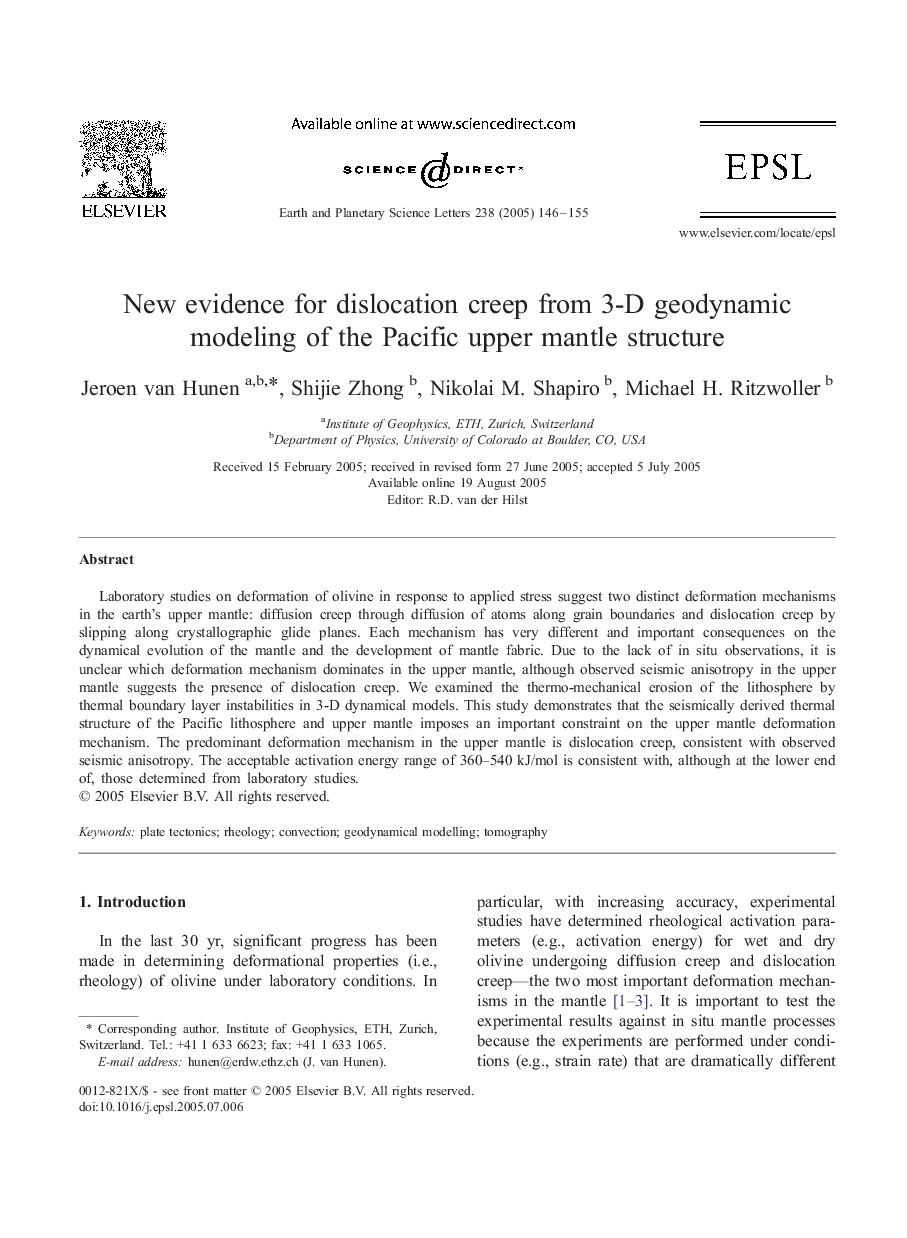| Article ID | Journal | Published Year | Pages | File Type |
|---|---|---|---|---|
| 9522093 | Earth and Planetary Science Letters | 2005 | 10 Pages |
Abstract
Laboratory studies on deformation of olivine in response to applied stress suggest two distinct deformation mechanisms in the earth's upper mantle: diffusion creep through diffusion of atoms along grain boundaries and dislocation creep by slipping along crystallographic glide planes. Each mechanism has very different and important consequences on the dynamical evolution of the mantle and the development of mantle fabric. Due to the lack of in situ observations, it is unclear which deformation mechanism dominates in the upper mantle, although observed seismic anisotropy in the upper mantle suggests the presence of dislocation creep. We examined the thermo-mechanical erosion of the lithosphere by thermal boundary layer instabilities in 3-D dynamical models. This study demonstrates that the seismically derived thermal structure of the Pacific lithosphere and upper mantle imposes an important constraint on the upper mantle deformation mechanism. The predominant deformation mechanism in the upper mantle is dislocation creep, consistent with observed seismic anisotropy. The acceptable activation energy range of 360-540 kJ/mol is consistent with, although at the lower end of, those determined from laboratory studies.
Related Topics
Physical Sciences and Engineering
Earth and Planetary Sciences
Earth and Planetary Sciences (General)
Authors
Jeroen van Hunen, Shijie Zhong, Nikolai M. Shapiro, Michael H. Ritzwoller,
